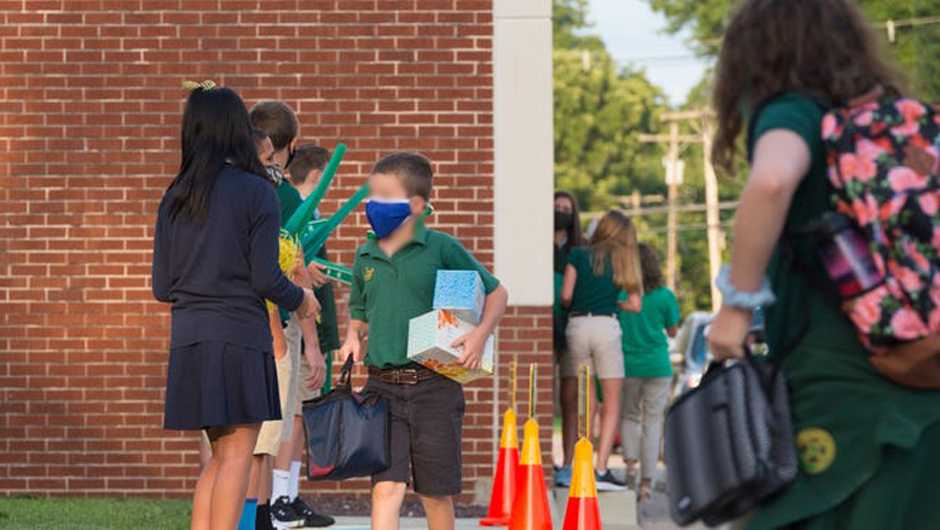As we enter another month of this global pandemic, it is more important than ever that we learn and teach our children how to live through this very difficult and confusing situation. While scientists and researchers continue to work hard in developing in effective vaccine against the Corona virus, let’s take some time to focus on the future of our world – our children. How can we help our children through these strange times in world history, especially now that we are at the doorstep of another academic year?
Honest and simple conversation, addressing their fears : It is absolutely essential to have open dialogues with your children about what is happening around them. Provide credible, fact-based information about the virus while ensuring that you steer clear of opinion-based social media streams which may not always be factual. When talking with your child, be honest and answer the questions directly and limit providing extra information they have not asked about.
Stay calm and reassuring : Children have an uncanny ability to mimic and mirror the parents’ emotions and it is vital that we, as parents speak with calm and reassurance. Make sure that parents do not dump/transfer their fears to their children. Talk to people who help and support you – a friend or family member and find ways to maintain your peace. Afterall, you cannot pour from an empty cup!
The ‘new normal’ activities : Children are resilient and so much more flexible than adults. Creating a new routine, considering the parents’ and children’s changing schedules, helps to bring a normalcy to their life. Kids any age thrive on routine. Try to keep to daily schedules as typical as always, even if you are quarantined at home. Some children cope with their fears through play. This is a normal way for them to manage their anxieties including repeating their games over and over. Some children might become easily irritable and clingy. They might not be able to express their true feelings/fears in words. Be understanding, calm and comforting. They may just need more time with you. Read to them, do activities like gardening, playing, cooking etc… together. Create something that they look forward to each day.
Back to School in the middle of COVID 19 :
Is it safe for my child to go back to school? What are the pros and cons of going back to school for in person learning? Should I continue with online learning for my child? How can I help my children and their school during this time?
These are some of the many questions we have as parents. As a fellow parent and educator, not a day passes by when I don’t think about my daughter, my students and the different facets of their education this year.
Educators, researchers, doctors and behavioral therapists all agree that beginning the school year with regular in person education is the best way to move forward. Schools are a crucial part of the foundation of our communities, as they provide safe, supportive learning conditions for children and enable parents to work and contribute to the society. As we have seen in the months of March-May, school closure disrupts the provision of in-person instruction and critical services to children and families, which in turn has has negative individual and societal consequences. The best available evidence from countries that have opened schools indicates that COVID-19 poses low risks to school-aged children, at least in areas with low community transmission, and suggests that children are unlikely to be major drivers of the spread of the virus.
Extended school closure is harmful to children. It can lead to severe learning loss, and the need for in-person instruction is particularly important for students with heightened behavioral needs. Schools play a critical role in supporting the whole child, not just their academic achievement. In addition to a structure for learning, schools provide a stable and secure environment for developing social skills and peer relationships. Social interaction at school among children in grades PK-12 is particularly important for the development of language, communication, social, emotional, and interpersonal skills.
By reopening schools, we create opportunities to provide education for the future of our world, all the while taking every precaution to protect students, teachers, staff and all their families.
However, switching from virtual/online learning to in-person learning amid a pandemic may be stressful for some children. While a lot of children thrive in a regular learning environment, many children struggle with drastic changes from their usual routine. Afterall, uncertainty can make anyone feel anxious – not just children. Helping them through these changes can be easily achieved by creating channels of open communication between parents and children over any uncertainties. Additionally, knowing exactly what the new normal in schools will be like, should help reassure your children. Work with your children’s school and teachers and discuss avenues where you can create a support system for children at home and school. Be very flexible as the need of the hour changes very frequently. Be mindful that there are so many moving parts to this school year, and it is a joint effort of parents and teachers to make this year be productive for our children. Be kind and considerate as that will go a long way in making everyone’s lives better.
Although there is no “best” answer, we can focus on the present moment and ways to stay safe with proper hand washing and social distancing. Understand that “normal” is subjective. As a family and community, parents, children and teachers can work together towards their own “normal.”




